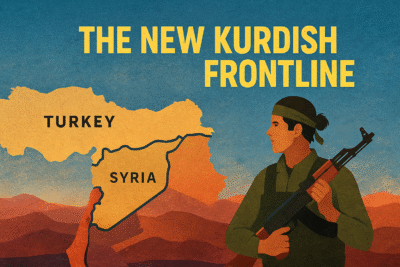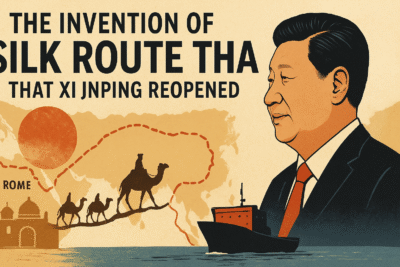
Katchatheevu, a sliver of land in the Palk Strait separating India and Sri Lanka, might be small in size, but it casts a long shadow on the relationship between the two nations. Despite being uninhabited, the island has been a source of contention for decades, driven by historical claims, contested ownership, and the livelihoods of fishermen.
A History of Claims:
The roots of the dispute stretch back to the colonial era. India lays claim to Katchatheevu based on the historical control exercised by the Ramnad kingdom, a south Indian principality, over the island. This claim is backed by evidence of rent collection from the island by the Ramnad zamindars.
However, Sri Lanka, then Ceylon, counters with its own historical narrative. They point to ancient maps and the presence of the St. Anthony’s Church on the island, which falls under the jurisdiction of the Catholic Church’s Jaffna Diocese.

A Temporary Solution, a Lingering Dispute:
The immediate cause for concern arose in the 1920s, when the British, who ruled both India and Ceylon, needed to define maritime boundaries. A provisional agreement established a border in 1921, placing Katchatheevu within Sri Lankan territory. This, however, was intended as a temporary solution, leaving the ownership question unresolved.
The Transfer of Katchatheevu: A Controversial Decision
The turning point came in 1974 when Prime Minister Indira Gandhi of India signed a maritime agreement with Sri Lanka. This agreement aimed to settle the maritime boundary dispute in the Palk Strait.
As part of this deal, India ceded sovereignty over Katchatheevu to Sri Lanka. The exact reasoning behind this decision remains a subject of debate, with some suggesting that Prime Minister Jawaharlal Nehru, Gandhi’s father, had earlier downplayed the island’s strategic importance.

Prime Minister Narendra Modi recently intensified his criticism of the Congress regarding the Katchatheevu island, situated between India and Sri Lanka. Modi accused the Congress of “callously” ceding the island to Sri Lanka.
External Affairs Minister S Jaishankar echoed Modi’s sentiments by suggesting that Prime Minister Indira Gandhi, in the 1970s, followed through on what her father, Jawaharlal Nehru, had contemplated in the 1960s.

Jaishankar, during a press conference, alleged that Nehru had expressed willingness to relinquish India’s claim to the island, despite legal opinions favoring Indian jurisdiction over Katchatheevu. “To Pandit Nehru, this was a little island. He saw it as a nuisance.”
“I attach no importance at all to this little island and I would have no hesitation in giving up our claim to it. I do not like matters like this pending indefinitely and being raised again and again in Parliament,” Jaishankar quoted Nehru as stating.
The Agreement’s Terms and Unforeseen Consequences
While Sri Lanka gained control over the island itself, the agreement included specific provisions for Indian fishermen:
Limited Access: Indian fishermen were granted permission to use Katchatheevu for specific purposes like resting, drying their nets, and attending the annual St. Anthony’s festival. Pilgrimage rights were also ensured.
The Fishing Rights Question: Notably absent from the agreement was any explicit mention of fishing rights within the Sri Lankan territorial waters surrounding Katchatheevu. This omission became a significant point of contention.

A Simmering Dispute with Lasting Impact:
The transfer of Katchatheevu to Sri Lanka proved to be a contentious decision in India, particularly for Tamil Nadu fishermen who have relied on the surrounding waters for generations. They argue that the agreement restricts their traditional fishing grounds and jeopardizes their livelihood. Protests and political tensions have flared up periodically, highlighting the ongoing concerns of the Indian fishing community.

The Present and the Future:
The Katchatheevu dispute continues to simmer, casting a shadow on India-Sri Lanka relations. While diplomatic ties are maintained, the issue of fishing rights and access to the island remains a point of friction. Finding a solution that balances Sri Lanka’s sovereignty over the island with the needs of Indian fishermen is crucial for a lasting resolution.
xxx
Below is a simplified Q&A on Katchatheevu island:
Q: What are the historical claims surrounding Katchatheevu?
A: The dispute over Katchatheevu traces its roots back to the colonial era. India asserts ownership based on historical ties, citing the control exercised by the Ramnad kingdom over the island. Conversely, Sri Lanka presents its own historical evidence, including ancient maps and the presence of St. Anthony’s Church under the jurisdiction of the Jaffna Diocese.
Q: What was the temporary solution implemented during the colonial period?
A: In the 1920s, a provisional border was established, placing Katchatheevu within Sri Lankan territory. However, this arrangement was intended as a temporary solution, leaving the question of ownership unresolved.
Q: What significant event occurred in 1974 regarding Katchatheevu?
A: In 1974, then Indian Prime Minister Indira Gandhi signed a maritime agreement with Sri Lanka, conceding sovereignty over Katchatheevu to Sri Lanka. The exact rationale behind this decision remains debated, with speculation about Prime Minister Nehru’s earlier stance on the island’s strategic importance.
Q: What were the terms of the agreement regarding Katchatheevu?
A: While Sri Lanka gained control over the island itself, specific provisions were made for Indian fishermen, allowing them limited access for purposes such as resting, drying nets, and attending religious festivals. However, the agreement did not explicitly address fishing rights in the surrounding waters.
Q: What has been the aftermath of the transfer of Katchatheevu?
A: The transfer of Katchatheevu to Sri Lanka has sparked controversy, particularly among Tamil Nadu fishermen who have traditionally relied on the surrounding waters for their livelihood. They argue that the agreement jeopardizes their fishing rights and livelihoods, leading to periodic protests and political tensions.
Q: What is the current status of the Katchatheevu dispute?
A: The dispute over Katchatheevu continues to simmer, casting a shadow over India-Sri Lanka relations. Despite diplomatic efforts, the issue of fishing rights and access to the island remains unresolved, requiring a delicate balance between Sri Lanka’s sovereignty and the needs of Indian fishermen.
In short:
Katchatheevu, though small in size, holds significant historical and geopolitical importance. The dispute surrounding the island underscores the complexities of maritime boundaries and the livelihoods of those dependent on its waters. Finding a mutually acceptable solution remains essential for fostering peace and stability in the region.



